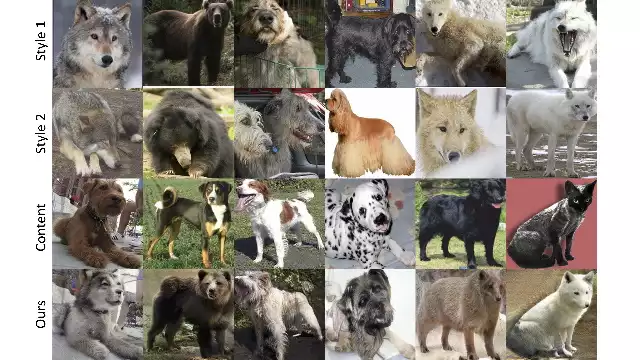Nvidia has come a long way since the infamous AI-generated cat photo scare a few years ago. At this year's European Conference on Computer Vision (ECCV), Nvidia made a major advance in its open source image translator: COCO-FUNIT, or "Few-Shot Unsupervised Image Translation with a Content Conditioned Style Encoder".
"Our architecture enables photorealistic translation," the accompanying paper claims.
Still in its infancy, the technology can synthesize images to create new, fantastic, chimeric animal (and apparently motorcycle) hybrids; as demonstrated in the GANimal application, previous iterations seem to have been infused with nightmarish existential anguish techniques Duh... Fair warning, eerie examples emerge.
In case you didn't know, the general idea is that given an input (content) image, the AI can apply different skins (styles) to it while maintaining the pose (structure) of the original image. In other words, it can apply a polar bear skin to a pug or make a canary look like a great eagle. This seems like a great way to blend animal friends, but it would be even more interesting to give it a human face and have the AI turn your coworker into a furry abomination.
As you can see, the original baseline FUNIT architecture (the technology that created the monster above) ran into many "content loss" problems. Animals blending into the background and inconsistencies in the scaling and alignment of body parts all had the effect of offending your senses and dragging you into the abyss of the uncanny valley.
However, a more recent iteration of this technology addresses these problems with a "novel network architecture," the content-conditional style encoder. It "takes both content and style images as input" and can handle more information for the AI, resulting in less anomalies and more lifelike results.
While still teetering on the edge of the uncanny, this new technology seems to be a step forward from the amorphous blobs and faceless nightmares of the past. If you want to learn more about the latest advances, grab a strong cup of coffee and look through COCO-FUNIT (pdf warning). The open source code will be available soon, so keep an eye out for strange iterations on the web.


Comments